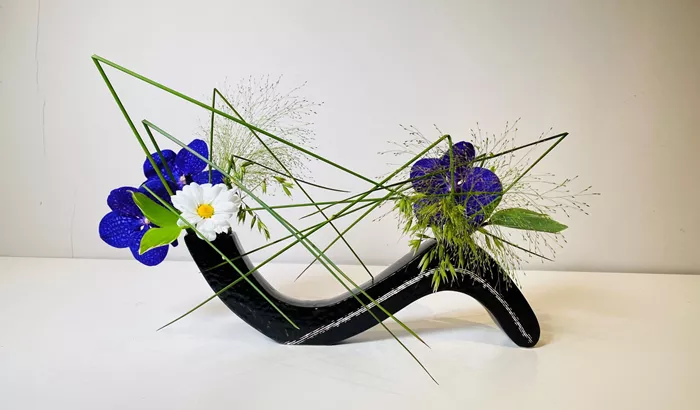Ikebana, the ancient Japanese art of flower arranging, is a practice that goes beyond simple decoration—it’s a way to connect deeply with nature and reflect on life. “Flowers have power.
Sharing arrangements of flowers shows our love,” explains Carolyn Alter, a Certified Associate Master and head teacher of the Ohara School of Ikebana in Oregon.
For centuries, flowers have been used to mark important life events like births, weddings, and holidays, with ikebana playing a significant role in these celebrations.
The roots of ikebana trace back to ancient Japan, evolving from simple flower offerings at Buddhist temples around the 7th century.
Early ikebana, known as “kuge,” featured asymmetrical arrangements with three stems, arranged at varying heights to form a triangular shape.
Over time, these arrangements shifted from temple rituals to decorative art, and in 1462, Senkei Ikenobo, a priest at Kyoto’s Rokkakudo Temple, became recognized as a “master of flower arranging.” His teachings laid the groundwork for the first formal ikebana school.
At its core, ikebana isn’t just about arranging flowers—it’s about embracing the beauty of nature and life itself. “Ikebana is a path, or ‘kado,’ the way of flowers, which helps you achieve depth and connect with the world around you,” says Alter.
For many, ikebana is also a means of breaking away from the distractions of modern life.
In today’s world of constant digital connectivity, ikebana provides a simple way to reconnect with nature, requiring only a few basic materials—a container, a kenzan (a pin frog to hold the stems), scissors, and natural elements like flowers and greenery from your own garden or the grocery store.
While the practice of ikebana can take a lifetime to master, its accessibility makes it a quick and meaningful way to engage with the environment. Over the centuries, ikebana schools have formed around different styles and philosophies.
One example is the Ohara School, founded in 1895 and passed down through five generations, which Alter has studied for over 30 years.
Historically, ikebana was a male-dominated practice, with priests and samurai being the primary arrangers. However, during Japan’s Meiji Period (late 19th century), as the country opened up to the West, women began to engage with ikebana more actively.
Today, it is a practice passed from generation to generation, often from mother to daughter, continuing to evolve and inspire people worldwide.
The art of ikebana continues to be not just a tradition but a personal journey, allowing practitioners to cultivate a deeper appreciation for the beauty of life through flowers.


